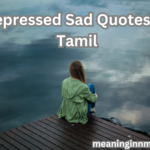Digital Marketing
Promotional messaging and its impact along the customer journey can be delivered and measured with the use of electronic devices and the expertise of marketing professionals. Generally speaking, when people talk about “digital marketing,” they mean advertising campaigns that can be viewed on a digital device, such as a computer, smartphone, or tablet. Online video, display ads, SEM, PPC, and SMM, as well as social media posts, are all examples. The term “traditional marketing” is typically used to describe methods like magazine ads, billboards, and direct mail in contrast to digital marketing. Strangely, when people think of “traditional marketing,” they always think of TV.
Did you know that more than 7 in 10 Americans use the internet regularly? And not only that, but 43% log on more than once per day, and 26% are online “almost constantly.”
Mobile internet users have even greater penetration rates. At least 89% of U.S. residents go online at least once every day, with 31% doing so virtually nonstop. It’s crucial for businesses to have a strong online advertising presence in order to capitalize on the growing number of clients who are searching for products and services just like theirs.
With the help of a digital marketing strategy, you can reach out to your current clientele as well as people who might be interested in what you have to offer via a variety of online mediums. Therefore, you may establish credibility, delight current clients, attract new ones, and more.
Table of Contents
What is digital marketing?
When businesses use the internet and other types of digital communication to reach out to potential clients, this practice is known as digital marketing or online marketing. Email, social media, and online ads are just the beginning; now consider text and multimedia messages as another avenue for spreading your message.
Inbound marketing versus digital marketing
It’s not surprising that people get digital marketing and inbound marketing mixed up. Email and web content are two of the many inbound marketing tactics that are also used in digital marketing. The primary goal of both is to attract and convert leads into paying clients at various stages of the sales funnel. However, the two methods contrast in how they see the role of the instrument in achieving the objective.
In digital marketing, we look at how various digital channels might influence potential customers. A brand’s digital marketing strategy could involve promoting itself across a number of different platforms, or it could be dedicated to just one. A corporation may, for example, focus on social media and email marketing campaigns to the exclusion of other types of digital marketing.
However, inbound marketing takes a more all-encompassing approach. First, it takes into account the objective, next it examines the available resources to figure out which ones will most efficiently reach the desired audience, and finally it decides when in the sales funnel this should occur. Take, for instance, the case of increasing website traffic in order to increase the number of prospects and leads produced. Search engine optimization (SEO) can be a vital part of your content marketing strategy, leading to better-performing blogs, landing pages, and other forms of content.
Remember that as a marketing professional, you are not required to pick between digital and inbound strategies. They complement each other quite well. Effective digital marketing requires structure and purpose, which inbound marketing provides by ensuring that all digital marketing channels contribute to a common goal.
Why is digital marketing important?
Your company can benefit from advertising of any kind. The widespread availability of digital channels, however, has boosted the significance of digital marketing. In reality, there were 5 billion people using the internet around the world in April of 2022.
You can reach your demographic through a variety of digital marketing channels, from social media to SMS. In addition, the start-up costs for digital marketing are low, making it an affordable marketing option for startups and small businesses.
B2B versus B2C digital marketing
Business-to-business (B2B) and business-to-consumer (B2C) organizations can both benefit from digital marketing techniques, however B2B and B2C companies have vastly different digital marketing best practices. Examining the use of digital marketing in business-to-business and business-to-consumer campaigns.
Customers in the business-to-business sector typically take more time making purchases, leading to lengthier sales cycles. These clientele respond better to long-term techniques like relationship building than B2C customers do to short-term ones like offers and messaging.
Skilled B2B digital marketers deliver compelling arguments and data to sway business decisions. Content created for business-to-consumer audiences is more likely to appeal to the reader’s emotions in order to encourage them to make a purchase.
In most cases, more than one individual needs to weigh in on a B2B choice. The most effective promotional materials for influencing such choices are those that are easily disseminated and downloaded. On the other hand, business-to-consumer clients like to have personal interactions with brands.
Of course, every rule has its exceptions. More serious and educational information might be provided by a business-to-consumer firm selling expensive goods like cars or computers. Your digital marketing approach, whether business-to-business or business-to-consumer, must always be designed with your specific audience in mind.
Examine your present customer base to develop strategic, focused online marketing initiatives. If you want your marketing to be successful and attract new clients, you need to do this.
Types of digital marketing
The field of digital marketing is as diverse as the various forms of online communication. Some of the most common strategies used in digital marketing are outlined here.
Search engine optimization
Technically speaking, SEO is not a type of marketing but rather a technique used in marketing. According to The Balance, SEO is “the art and science of making web pages attractive to search engines.”
What matters most is the “art and science” of search engine optimization. To reach the best possible position on a search engine results page (SERP), SEO takes careful consideration of a wide variety of criteria.
To optimize a website for search engines today, the most crucial factors to think about are:
User involvement and content quality
Mobile-friendliness
Inbound link quantity and quality
All of your site’s backend components, including those mentioned above, need to be optimized for technical SEO as well. Consider the URL, how long it takes to load, and if there are any broken links. Boosting your site’s technical SEO can make it easier for search engines to index your content.
SEO is both a science and an art due to its strategic utilization of these aspects and the inherent unpredictability of the process.
Ranking on the top page of a search engine’s results is the ultimate objective. This makes it so that anyone looking for your brand can quickly find the items or services you offer. Despite the proliferation of search engines, Google remains the primary focus of many digital marketing campaigns.
There is no reliable metric or set of rules in SEO for achieving high search engine rankings. It is impossible to create accurate predictions because Google and other search engines modify their algorithm on a near-constant basis. What you can do is track how people interact with your page and alter your tactics accordingly.
Content marketing
The quality of your content is an essential element of a well-optimized page, as was previously noted. Because of this, search engine optimization is crucial to the success of content marketing, which is predicated on the dissemination of such material to a defined audience.
The end purpose of content marketing, as with any other form of marketing, is to increase sales. It does this in a unique way compared to conventional advertising. Instead than luring customers with the promise of benefits from a purchase, it provides such benefits upfront, in the form of free content like:
- Articles on Weblogs
- E-books
- Newsletters
- Transcripts of videos and/or audio
- Whitepapers
- Infographics
There are numerous statistics demonstrating the significance of content marketing:
Eighty-four percent of consumers say they want companies to create content that is both entertaining and useful.
Sixty-two percent of businesses with over 5,000 employees publish new material every day.
Ninety-two percent of marketers say that content is highly valued in their organization.
Although content marketing is beneficial, it is not without its challenges. Writers who specialize in content marketing must excel at both search engine optimization and creating content that readers enjoy enough to spread the word about and engage with further. When the material is on point, it may forge lasting bonds with stakeholders at every stage of the process.
Knowing your target demographic is essential for producing content that is both interesting and informative. Who is it that you hope to attract with your content promotion strategies? Understanding your target demographic is essential before deciding what material to produce for them. Videos, blogs, printable worksheets, and other forms of content can all find a home in your content marketing strategy.
It’s important to stick to content marketing best practices regardless of the type of material you’re making. Making information that is grammatically sound, error-free, straightforward, informative, and engaging. Whether it’s a free consultation with a sales representative or a signup page, your content should lead readers to the next logical step in your sales funnel.
Social media marketing
Promoting your business and getting others talking about it is the goal of social media marketing. You can promote your business, goods, and services as well as your company culture using social media. Focusing on social media marketing can pay off because billions of people use these sites every day.
Facebook, Twitter, and Instagram are the most widely used social media marketing channels on the internet, followed by LinkedIn and YouTube. Your business’s social media strategy should be tailored to your specific objectives and target demographic. For instance, LinkedIn is a great place to find new leads for your FinTech firm because so many people in the sector use it every day. However, if your business targets a younger demographic, you may find more success by advertising on Instagram.
Because of the interactive nature of social media marketing, it has quickly gained widespread adoption. With 96% of B2C digital marketers using it, it is the most popular content medium in that industry, and it is quickly gaining traction in the B2B sector as well. As reported by the Content Marketing Institute, this year saw a significant uptick in social media usage by B2B content marketers (61%).
In order to gauge the success of your social media marketing efforts, you may use the platform’s in-built engagement analytics. You have complete control over which metrics—shares, comments, or total clicks to your website—are most important to you.
Your social media marketing plan may not even aim to generate direct sales. When promoting themselves on social media, many companies prefer to spark conversations with their target demographics than directly solicit sales. This is especially prevalent among brands aimed at a mature demographic or selling services that aren’t suitable for on-the-spot purchases. The answer is found in the company’s social media marketing objectives.
Adhering to established practices is essential for developing a successful social media marketing strategy. Some of the most crucial recommendations for social media advertising are as follows:
Produce work that is both informative and interesting.
Give courteous responses to feedback and inquiries.
Plan out your social media updates in advance.
Time your updates perfectly!
Boost your advertising campaigns by staffing them with social media managers.
Find out how Mailchimp’s free social media management tools stack up against the competition and see how you can improve your social media strategy by targeting your audience where they already spend time online.
Pay-per-click marketing
Pay-per-click (PPC) advertising is a model of online promotion in which the advertiser forks up cash each time one of their adverts is clicked. If you want to reach a certain audience through digital platforms, but don’t want to foot the bill for doing so, you can instead pay only when people click on your advertising. It’s trickier to predict who will see your ad and when.
Search engine advertising is a common form of pay-per-click (PPC) marketing, and as Google is the most widely used search engine, many companies rely on Google Ads for this purpose. When a slot opens up on a SERP (search engine results page), the engine uses what amounts to a live auction to fill it. Each available ad is given a ranking by an algorithm that takes into account a variety of parameters.
- Premium Ads
- The Value of Keywords
- Quality of the landing page
- Cost of Bids
- When a user enters a search term into a search engine, PPC adverts are prioritized based on the aforementioned criteria.
After seeing an ad, users of pay-per-click (PPC) campaigns are expected to take one of several predetermined steps. Conversions refer to certain occurrences, which may or may not involve a financial exchange. A conversion might be anything from signing up for your newsletter to calling your home office to making a transaction.
You may monitor the success of your digital marketing strategy by following the path of your desired conversions through the channels of your choice.
Affiliate marketing
Affiliate marketing is a form of online advertising in which one party benefits financially from the promotion of another. Whether you’re the promoter or a company that partners with the promoter, you’ll follow the same steps.
The system is functional because of the income split. When someone makes a purchase after being referred by an affiliate, the affiliate receives a commission. The affiliate receives a commission from the business on each sale they generate.
There are affiliate marketers who choose to focus on reviewing products from a single firm on their blog or other unbiased website. Some people have connections with numerous vendors.
Making contact with the other party is the first step in becoming an affiliate or finding one. You can launch or join a single-retailer program, or you can use digital channels made to link affiliates with shops.
Many options exist for retailers who want to interact directly with affiliates to make their program more enticing to potential promoters. You need to make sure your affiliates have everything they need to be successful. That consists of marketing resources, such as templates and incentives for exceptional achievements.







